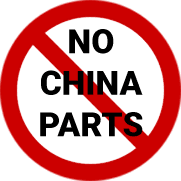The Oxygen Systems Used For Aviation
During flight, aircraft tend to operate at extreme altitudes in which low air pressure and oxygen density is prevalent. If crew members and passengers are exposed to such conditions without ample protection, hypoxia can quickly ensue. To keep all individuals aboard an aircraft safe and comfortable, various oxygen systems may be used. While many airliners and business jets will utilize pressurized cabins and their related oxygen systems, other aircraft require different solutions that often come in the form of portable oxygen units. As there are multiple portable oxygen systems that provide different functionalities, it can be highly beneficial to understand each.
There are multiple portable oxygen systems available for aircraft operations, and each provides its own unique functionalities. The diluter-demand oxygen system is one that only supplies air when the user inhales from the mask. With an automix lever, cabin air and oxygen may be mixed together for breathing, or 100% oxygen may be supplied depending upon the altitude. The masks of such equipment are designed to seal around the face, ensuring that the oxygen supply is undiluted.
The pressure-demand oxygen system is fairly similar to the diluter-demand type, though it supplies pressurized oxygen once the altitude surpasses 34,000 feet. Pressure-demand oxygen systems are most notable for their positive pressure mask capability, that of which pressurizes one’s lungs while they breathe for comfort. With the pressure capability of the portable oxygen unit mask, such systems may be relied upon when operating at altitudes surpassing 40,000 feet.
When there are passengers aboard an aircraft which cannot maintain cabin pressure, the most common portable oxygen cylinder type used for such individuals is the continuous-flow oxygen system. The masks of such equipment will regularly feature a reservoir bag which will fill up with oxygen from the portable container as the user breathes. This permits a higher respiratory flow rate for the user, minimizing the amount of dilution. If the bag runs out of breathable air, ambient air can be mixed with supplied oxygen.
Electrical pulse-demand oxygen systems are quite efficient and minimize oxygen loss through their ability to supply air when an inhalation effort is detected. As oxygen is only allowed to flow during the initial portion of the inhale breath, no oxygen is wasted. When compared to other oxygen cylinder systems such as the continuous-flow system, electrical-pulse demand oxygen systems can provide an individual with the same amount of breathing while containing 25-50% less supply due to their low-loss efficiency.
While each portable oxygen unit differs in its functionality, most will share the same major components. Typically, portable equipment will include a container, regulator, mask, and pressure gauge. When storing oxygen within the oxygen cylinder, the supply is kept at a pressure that ranges between 1,800 and 2,200 psi. Pressure will often fluctuate based on the temperature of the environment, and it is important to keep such equipment well regulated for temperature so that too much pressure is not lost.
With the use of various oxygen systems and their related equipment, pilots, crew members, and passengers can all be provided with ample breathing capabilities which is crucial when operating at extreme altitudes. ASAP Parts 360 is a premier online distributor of aircraft parts, and we are your sourcing solution for all the equipment and hardware that you need for your operations. Take the time to explore our expansive catalogs at your leisure or utilize our provided search engine to find specific items with ease. If you are interested in any of our offered items, get started with a competitive quote for your comparisons upon the submission of an Instant RFQ form as provided on our website.


